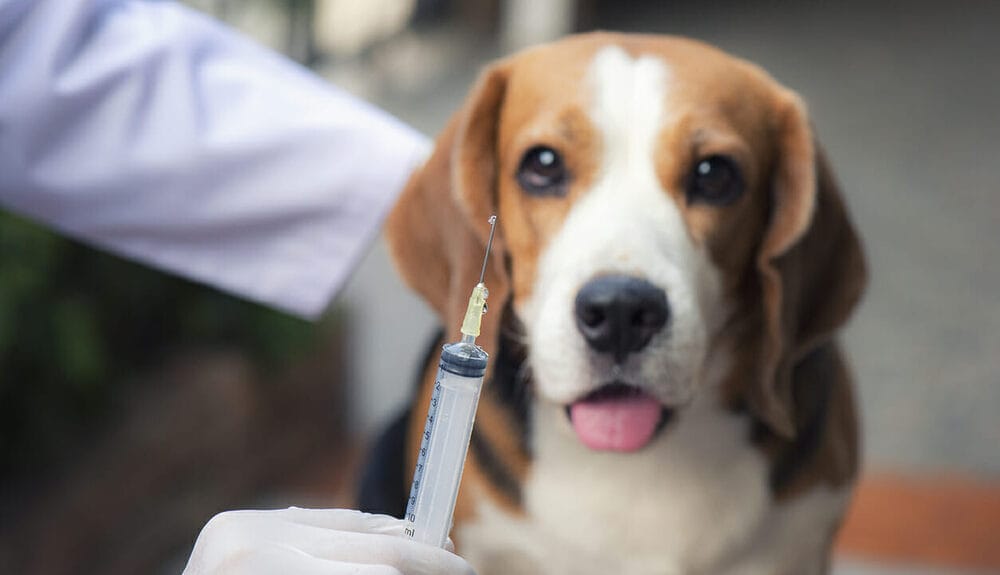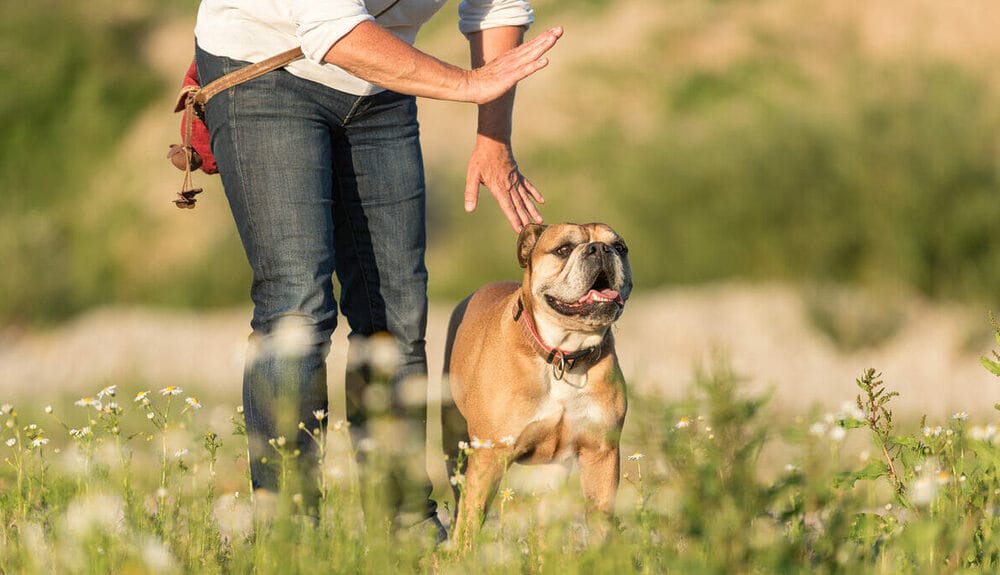
Do you live in a place home to various rattlesnakes and are you curious to know more about the potential benefits of the rattlesnake snake vaccine?
We at Dogaspet are here to point out the pros and cons of the rattlesnake vaccine. And, help you decide whether the vaccine works and how it protects your dog from venomous bites.
How Does Rattlesnake Vaccine for Dogs Work?
Over thirty rattlesnake types are extremely venomous to dogs and humans alike. But, with many scientific studies and research, scientists concluded that dogs need to be protected against the venomous poison of snakes.

After all, they are our lovely furry best friends, and most of us cannot imagine a life without them. So for that reason, scientists invented the rattlesnake vaccine for dogs, also called the Cortalus Atrox Toxoid, which has been on the market since 2003.
So, how does the vaccine work?
The vaccine’s function is to provide dogs with protection (antibodies) and reduce the symptoms, such as swelling and less pain, in case of a rattlesnake bite.
The antibodies protect the tissues and the vital organs from the bite, which can be deadly if not prevented by a vaccine or an immediate transmission of antivenom.
Once the dog is over four months of age or 16 weeks, it’s prepared to receive the vaccine. The dog needs to receive two vaccine doses about 30 days apart, and the dog needs to receive an annual booster, preferably 30-60 days before snake season.
However, once the vaccine is administered, it doesn’t mean you shouldn’t seek veterinary help immediately in case of a snake bite. Remember, the vaccine doesn’t give you full immunity. It only reduces the symptoms and gives your dog more time and better odds for a full recovery.
Pros and Cons of Rattlesnake Vaccine for Dogs
As with any vaccine, there are potential advantages and disadvantages. The pros outweigh the cons in cases like the rattlesnake vaccine for dogs. But besides the pros and cons, we’ll tackle the possible side effects your dog may experience to keep you well-informed of everything concerning such a vaccine.
- There’s backed-up evidence that shows the vaccine’s efficacy
- Costs less than treatment with snake antivenom
- The vaccine provides the dog with the necessary antibodies for the venom of at least ten rattlesnakes
- The antibodies decrease over time
- Does Not protect the dog from all rattlesnake types
- Possible side effects, although mild, may occur
Possible side effects from the rattlesnake vaccine
Even though the rattlesnake vaccine has been approved by the Government, has been laboratory tested, and has already been administered to thousands of dogs, every dog may react differently.
Only a few of the dogs that have received a vaccine may get a temporary lump at the injection place. But this is nothing that regular, gentle massage on the spot won’t solve. Also, it’s expected that the lump to go away in a couple of weeks.
Other mild side effects dogs may experience include:
Possible side effects from the rattlesnake vaccine:
- Fever or higher temperature
- Vomiting
- Diarrhea
- Lack of appetite
- Facial swelling
- Lethargy
Other Ways to Protect Your Dog Against Snake Bites Besides A Vaccine
If you didn’t know, rattlesnakes are among today’s most venomous snakes. The bite of a snake is like an injection shot, and the more you panic, the faster the venom transmits in the body.
Therefore, it’s important to note that the rattlesnake vaccine doesn’t make your dog immune to the bite. But as we mentioned, it only lessens the risk of permanent injury from such bites.

One way to protect your precious yet overly curious furry friend from snakes would be to introduce the snakes’ smell and teach them to be cautious of the smell- also known as snake aversion training. Remember, though, this technique requires great dedication and the utmost care, so it’s best to be administered by a training professional.
When taken in a professional setting- the dog is introduced to the snake, its smell, and its hissing sound. With proper training, the dog will stay away from the snake while keeping an eye out for any sudden movements.
In the worst-case scenario where your dog gets bitten by a rattlesnake, it’s important to try to reduce the dog’s heart rate to avoid accelerating the flow of the venom into the dog’s bloodstream. You can achieve this by staying as calm as possible and not trying to mend the bite alone. Immediately seek veterinary help.
How to Train Your Dog to Avoid Snakes?
There are a couple of training techniques and commands to try at home. One is the leave it commands, where you’ll teach the dog to direct its whole attention toward you once they hear the phrase.
You can do this by showing firm body language and voice, and once they leave the toy before them, give them a treat for a job well done. After a couple of tries, they’ll start associating the phrase with a treat, and eventually, the dog will comprehend the command and leave things without a treat. This command will come in handy when you encounter a snake on you walking or hiking.
How to Watch For Snakes While Hiking With Dogs
We know that every dog owner wants to spend as much time as possible with their furry best friend, even if that means going for a hike and letting them smell and sniff everything around, be it for enjoyment or to gather information about the surroundings.

With summer around the corner, we feel it is our duty to point out some tips to avoid snakes when going for a scenic hike with your dog. After all, summer doesn’t get its nickname as snake season without reason.
Familiarize with the snake types
To get one thing clear, every snake will certainly terrify a dog owner because of the dog owner’s lack of knowledge. So you might want to familiarize yourself with the snake’s appearance. Rattlesnakes usually have round pupils, a distinctive triangular-shaped head, and a rattle at the tail- hence their name.
You can do so by visiting local zoos or speaking with a certified snake handler.
Stick to the marked trails
Snakes like to stay in warm climates. Therefore you might find them lying on a rock or hidden in a shady area like overgrown bushes.
If you go for a scenic hike with marked trails, always follow the trails, and keep your dog on a leash at all times for a more relaxed, snake-free hike. Even though humans are prone to snake bites, dogs are even more susceptible due to their curious nature. In addition, snakes like to stay in warm climates.
Keep your dog on a leash
One of the best ways to protect your dog from snakes when hiking is to always keep them on a leash. This reduces the chance of your dog coming eye to eye with a snake and gives you a clear sight of what the dog is doing.
Besides keeping it on the leash, you need to train them before even setting foot on the trails- a thing we already discussed above.
Stay away from the snake
If you spot a snake on the marked trails, it’s important to stay as far away as possible. Even though they seem terrifying, snakes are also scared of our or our dog’s appearance.
In most cases, the snake crawls away or stays put in one place. When this happens, it’s best to slowly walk away and give the snake a lot of space.
Final Thoughts
The rattlesnake vaccine is particularly beneficial for decreasing the symptoms. It helps lessen the pain and the swelling while reducing the speed at which the venom spreads in the blood flow.
But as with every vaccine, it’s important to consider the cons. We hope this article made that decision a bit easier for you!

